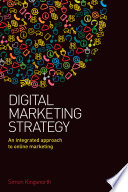

In the modern era, businesses must navigate a complex digital landscape that includes a variety of platforms, tools, and strategies. This idea emphasizes the importance of understanding how digital marketing fits into the broader marketing ecosystem. It discusses the rapid evolution of technology and consumer behavior, highlighting the necessity for marketers to stay updated on trends, tools, and channels that can effectively reach their target audience. The digital landscape is characterized by social media, search engines, email marketing, content marketing, and more. Each of these channels has its unique characteristics, advantages, and challenges. Marketers need to analyze their audience's preferences and behaviors across these platforms to create effective strategies. This understanding also involves recognizing the importance of data analytics and how it can inform decisions. By leveraging data, marketers can tailor their messages, optimize their campaigns, and ultimately achieve better results.
Continue readingThe foundation of any successful digital marketing strategy is the establishment of clear, measurable objectives. This idea stresses the importance of defining what success looks like for a business in the digital realm. Objectives should be SMART: Specific, Measurable, Achievable, Relevant, and Time-bound. By setting clear objectives, marketers can align their strategies with business goals, ensuring that every campaign contributes to the overall mission. This section explores various types of objectives, such as brand awareness, lead generation, customer retention, and revenue growth. It also discusses how to prioritize these objectives based on the company's stage, resources, and market conditions. The book emphasizes the need for continuous evaluation and adjustment of these objectives in response to changing market dynamics and consumer feedback.
Continue readingIdentifying and understanding the target audience is crucial for effective digital marketing. This idea delves into the process of creating detailed buyer personas that represent the ideal customers. The book outlines methods for gathering data on customer demographics, psychographics, and behavior patterns. By understanding the audience's needs, preferences, and pain points, marketers can create tailored content and campaigns that resonate with them. This section also covers the importance of segmentation, allowing businesses to target specific groups with personalized messages. The book discusses various tools and techniques for audience research, including surveys, social media analytics, and customer feedback. The ultimate goal is to ensure that marketing efforts are directed at the right people, increasing the likelihood of engagement and conversion.
Continue readingContent marketing is highlighted as a central component of digital marketing strategy. This idea emphasizes the importance of creating valuable, relevant content that attracts and engages the target audience. The book discusses different types of content, including blogs, videos, infographics, and social media posts, and how each can serve different purposes in the marketing funnel. It also covers the significance of storytelling in content marketing, helping brands connect emotionally with their audience. Furthermore, the book provides insights into content distribution strategies, including SEO, social media promotion, and email marketing, to ensure that content reaches its intended audience. By focusing on quality content, businesses can build trust, establish authority, and ultimately drive conversions.
Continue readingData analytics plays a pivotal role in shaping digital marketing strategies. This idea explores how businesses can leverage data to gain insights into customer behavior, campaign performance, and market trends. The book discusses various tools and techniques for data collection and analysis, such as Google Analytics, social media insights, and CRM systems. It emphasizes the importance of key performance indicators (KPIs) in measuring success and making informed decisions. By analyzing data, marketers can identify what works and what doesn't, allowing for real-time adjustments to campaigns. This section also addresses the ethical considerations of data usage, emphasizing the importance of transparency and data privacy. Overall, the effective use of data analytics can lead to more targeted marketing efforts and improved ROI.
Continue readingThe digital marketing landscape is constantly evolving, driven by technological advancements and shifts in consumer behavior. This idea emphasizes the need for marketers to remain agile and adaptable in their strategies. The book discusses emerging trends, such as artificial intelligence, voice search, and augmented reality, and how they impact marketing practices. It also highlights the importance of staying attuned to changing consumer preferences, particularly in the context of social media and mobile usage. Marketers are encouraged to experiment with new technologies and platforms to stay ahead of the competition. This section underscores the significance of continuous learning and professional development in the field of digital marketing.
Continue readingAn integrated marketing approach is essential for creating a cohesive brand experience across all digital channels. This idea discusses the importance of aligning various marketing efforts, including social media, email, content, and paid advertising, to ensure consistency in messaging and branding. The book provides strategies for creating an integrated marketing plan, including the use of cross-channel campaigns and consistent branding elements. It also addresses the challenges of managing multiple channels and the need for collaboration among different teams within an organization. By adopting an integrated approach, businesses can enhance their visibility, improve customer engagement, and drive better results from their marketing efforts.
Continue reading